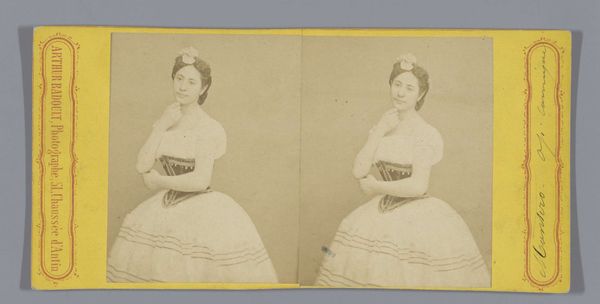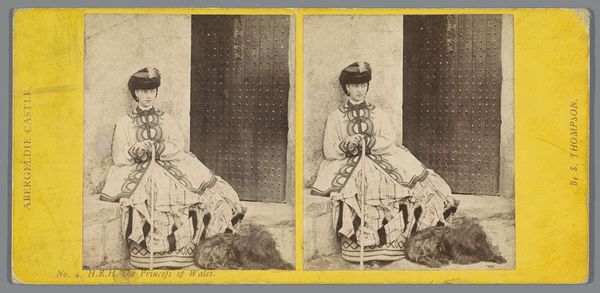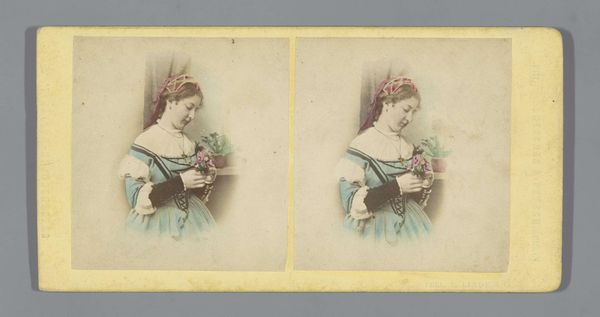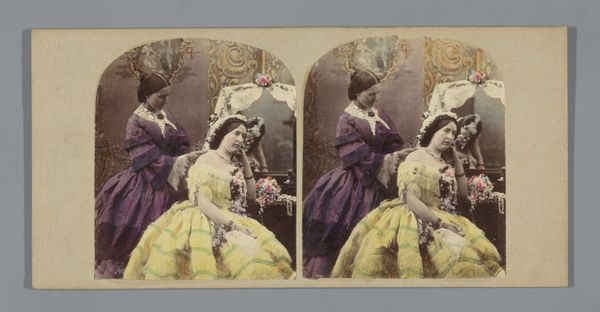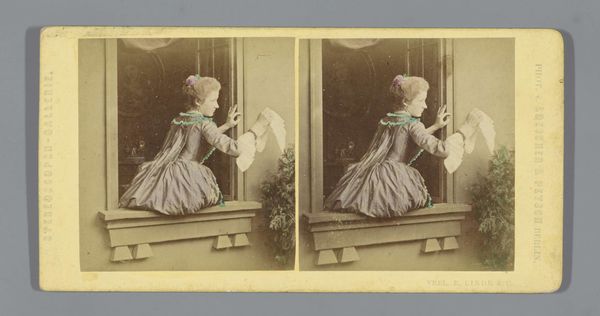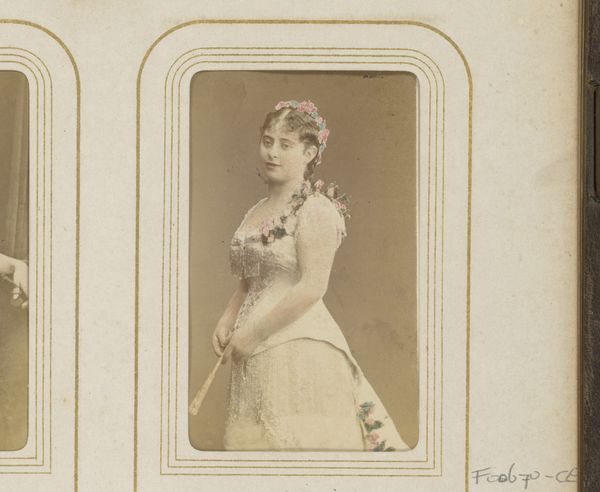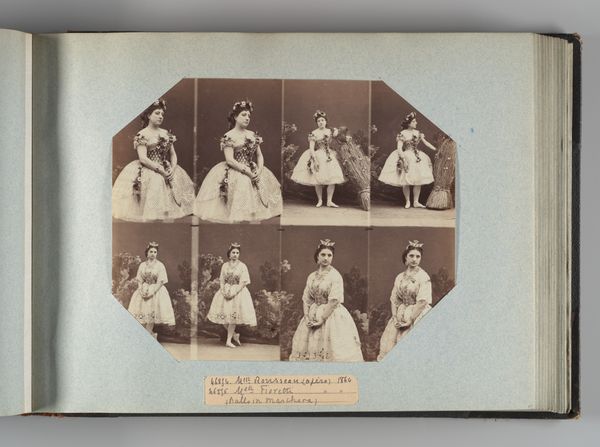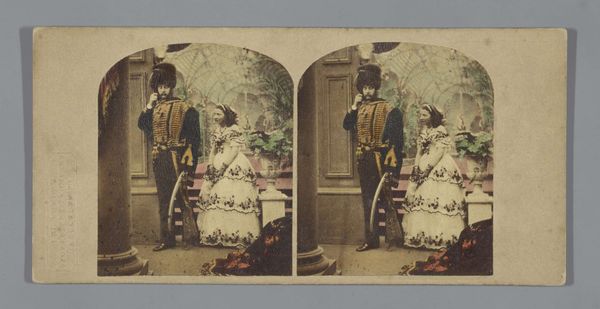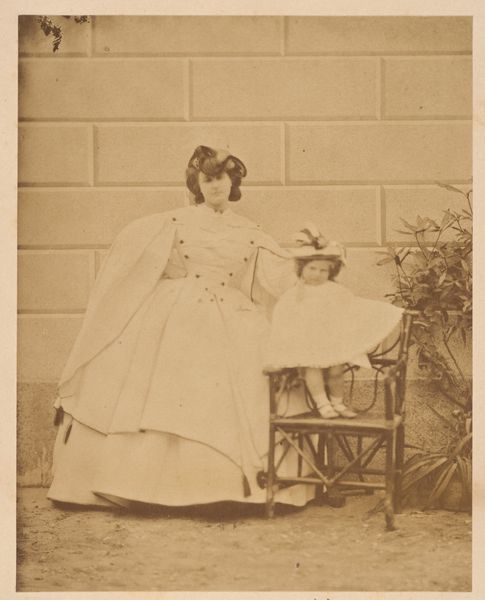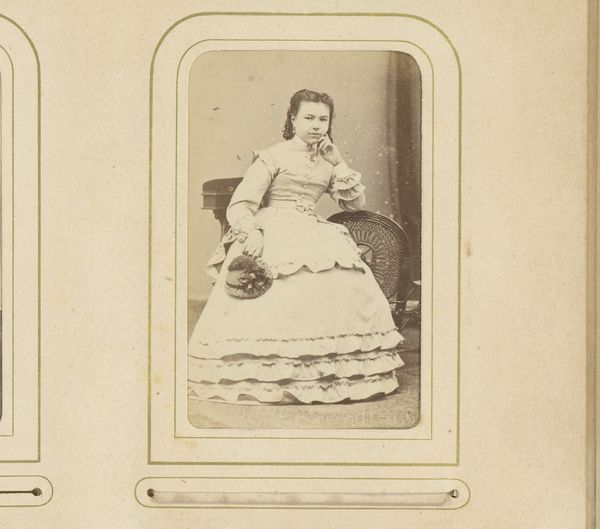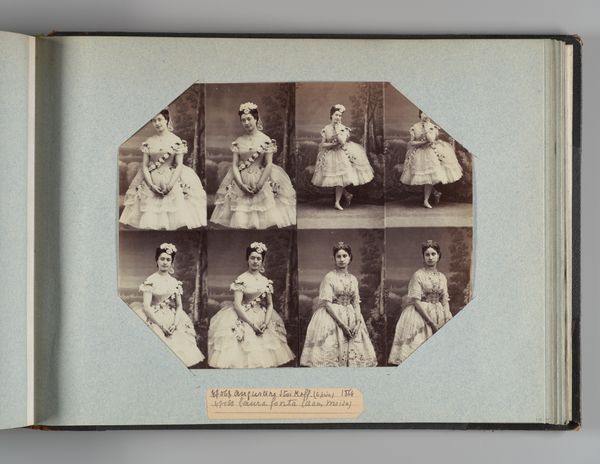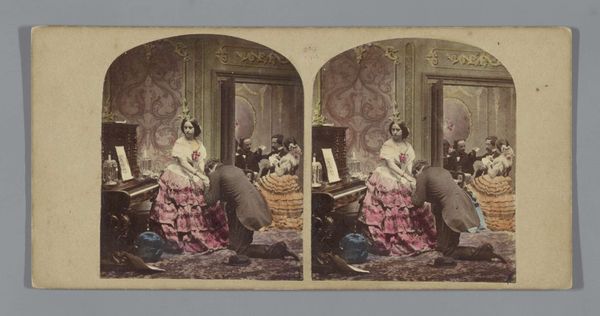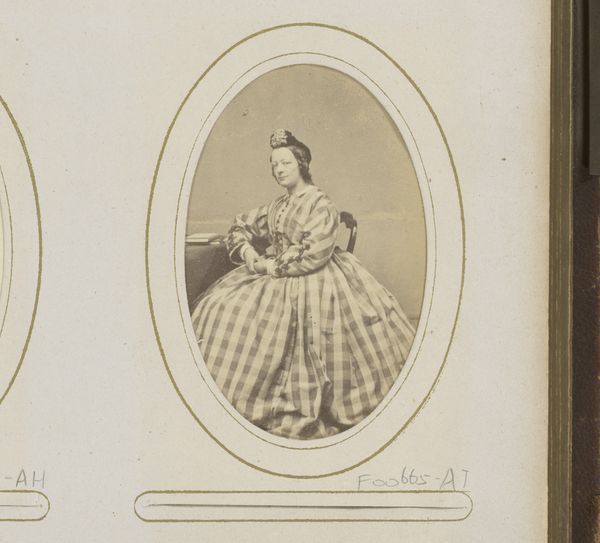
photography, albumen-print
#
portrait
#
photography
#
albumen-print
Dimensions: height 88 mm, width 173 mm
Copyright: Rijks Museum: Open Domain
Curator: This is "Portret van Bertha Horn," a photograph taken by Karl Heinrich Franz Stolze, dating back to before 1868. It's an albumen print, a very common photographic process during that period. Editor: It’s a rather intimate and somewhat theatrical portrait. The woman is reclining, draped in what looks like opulent fabrics, yet the setting feels stark. Curator: Stereoscopic portraits like this one gained popularity, offering a three-dimensional effect when viewed through a stereoscope, allowing for a more lifelike depiction of the sitter. The photographer, Stolze, played a role in democratizing image production as photo studios gained ground in European urban centers. This reflects shifts in cultural and economic dynamics surrounding art creation in this era. Editor: Absolutely. Thinking materially, the albumen process itself is interesting. The use of egg whites to bind the photographic chemicals to the paper contributes to the print's unique tonal range. We have this seemingly mass-produced format but its tangibility provides this trace of embodied, almost craft-like labor, to the photo itself. And beyond, what does her carefully staged pose convey about societal expectations of women during the time? Curator: The photographic portrait provided an aspirational symbol for a burgeoning middle class and solidified social hierarchies. The background might appear plain now, but consider the costuming, jewelry and the staging; this work signifies prosperity and social standing. Photography was becoming intertwined with notions of public persona and the construction of identity, even self-invention, that hadn’t quite existed before on such a widespread level. Editor: Good point. You see the controlled presentation, I’m thinking of the sitter’s posture, maybe that slight unease in her expression... What are the socio-economic factors impacting women having a studio portrait taken at this moment, not to mention considering what will happen to that image when complete? How will that image be consumed or displayed by future beholders, family or a more open public viewing? Curator: Considering it all, the piece speaks to a larger trend in nineteenth-century photography and studio culture and portraiture as status. Editor: Ultimately, it makes you reflect on both the industrial production of photographs in the era, and also on labor, value, and self-presentation in that context.
Comments
No comments
Be the first to comment and join the conversation on the ultimate creative platform.
